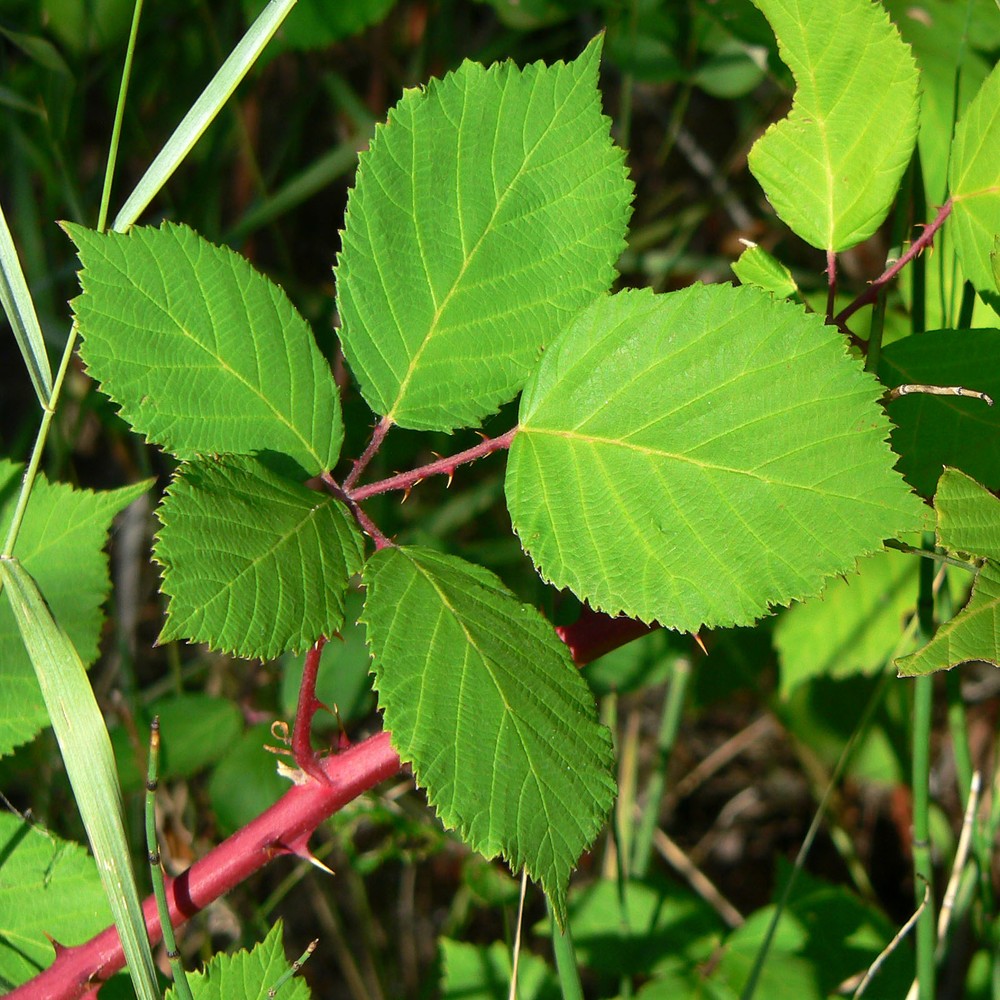European red raspberry
(Rubus idaeus idaeus)

Description
Rubus idaeus idaeus, commonly known as the European red raspberry, is a popular fruit-bearing shrub of the Rosaceae family. The plant is native to Europe and western Asia and is widely cultivated in temperate regions around the world. In this article, we will delve into the botany, history, cultivation, and uses of Rubus idaeus idaeus. Botany Rubus idaeus idaeus is a deciduous shrub that can grow up to 2 meters tall. The plant has an upright habit and is often trained onto a trellis for ease of cultivation and harvesting. The leaves are composed of three to five serrated leaflets, and the stems are covered in sharp, prickly thorns. The flowers are white or pink and are arranged in clusters at the tips of the stems. The fruits of Rubus idaeus idaeus are edible and are composed of many small drupelets that are arranged in a circular pattern around a central core. The fruits are typically bright red when ripe, although there are also yellow and black varieties. History The cultivation of Rubus idaeus idaeus dates back to ancient times. The plant was known to the Greeks and Romans, who used the fruits for medicinal purposes. In the Middle Ages, the plant was widely cultivated in Europe, and it was brought to North America by European colonists in the 17th century. Today, Rubus idaeus idaeus is widely grown in temperate regions around the world, including Europe, North America, and parts of Asia. Cultivation Rubus idaeus idaeus is relatively easy to cultivate and is a popular choice for home gardeners and commercial growers alike. The plant prefers well-draining soil that is rich in organic matter and should be watered regularly during the growing season. Rubus idaeus idaeus is hardy to USDA zones 3-8 and can tolerate cold temperatures down to -40°C. The plants are typically propagated by root cuttings or by layering, and they should be pruned regularly to promote new growth and to prevent the plants from becoming too crowded. Uses The fruits of Rubus idaeus idaeus are the primary reason for its cultivation. The berries are rich in vitamin C, antioxidants, and fiber, and they are used in a variety of culinary applications. Fresh raspberries are a popular ingredient in fruit salads, desserts, and smoothies, and they can also be used to make jams, jellies, and sauces. Raspberry leaves are also used to make herbal teas and are believed to have a number of health benefits, including reducing inflammation and improving digestive health. In addition to their culinary and medicinal uses, Rubus idaeus idaeus plants are also valued for their ornamental qualities. The plant's attractive leaves and flowers make it a popular choice for landscape plantings, and the fruits can add a splash of color to any garden. Conclusion Rubus idaeus idaeus is a popular and versatile plant that is valued for both its fruit and its ornamental qualities. Whether you are a home gardener or a commercial grower, this plant is a great choice for adding beauty and flavor to your garden. With a little bit of care and attention, you can enjoy a bountiful harvest of delicious and nutritious raspberries year after year.
Taxonomic tree:







